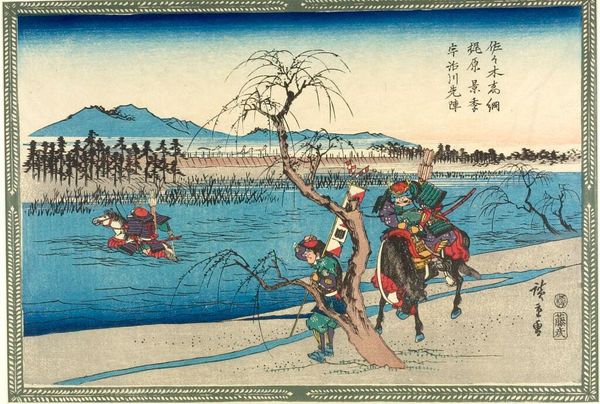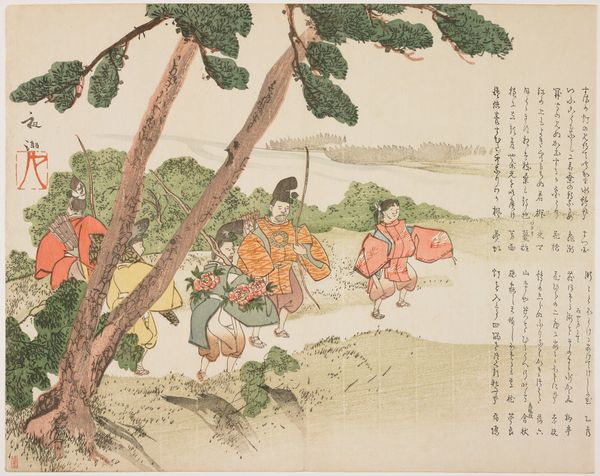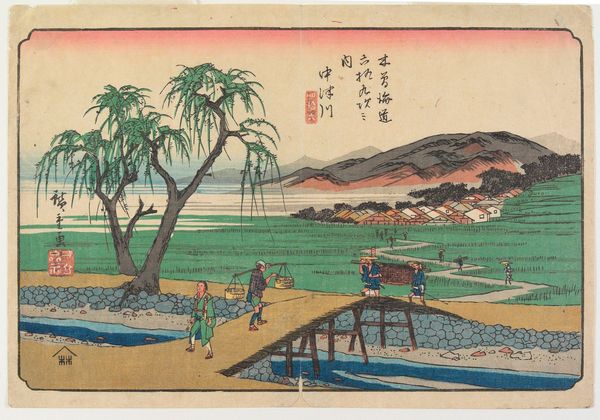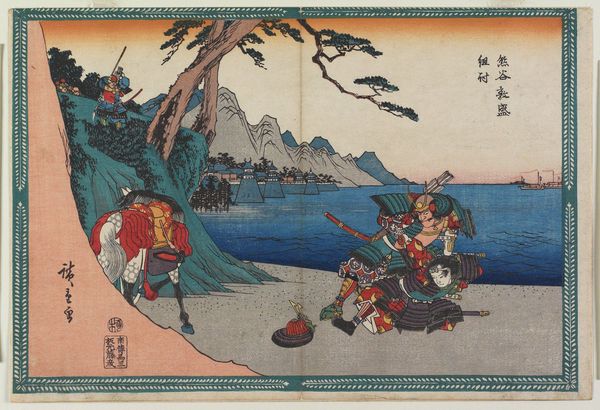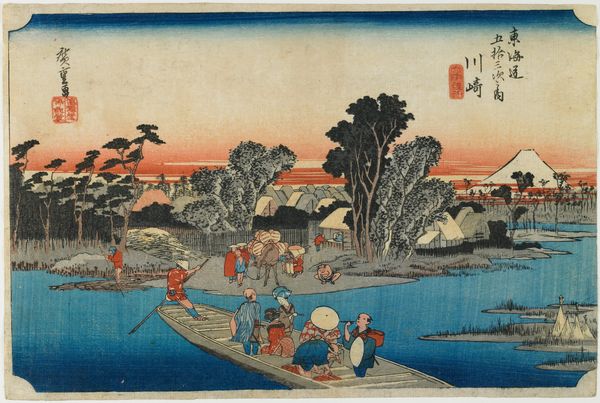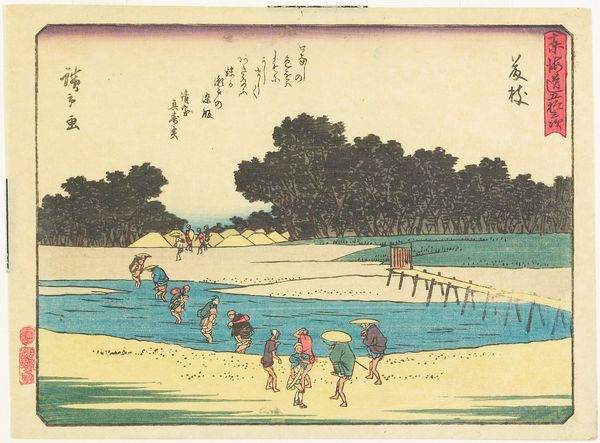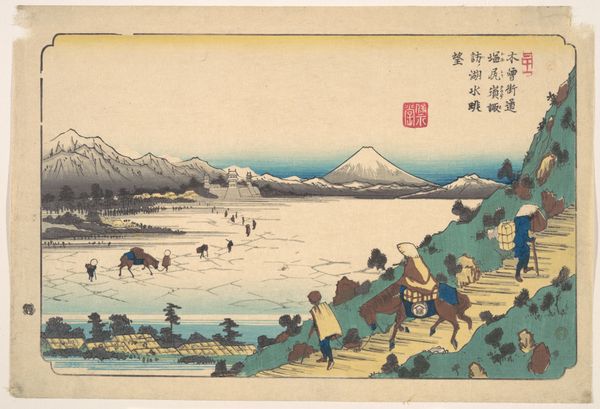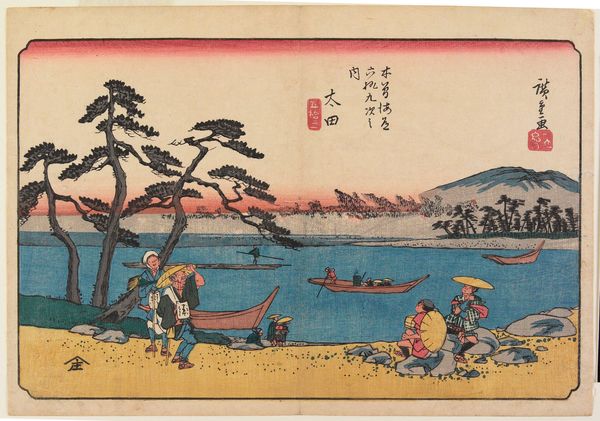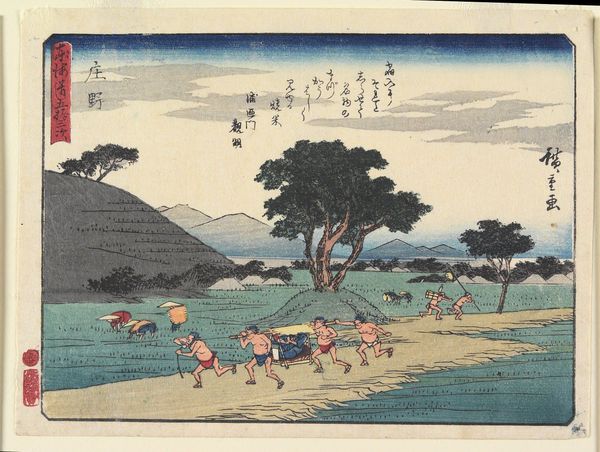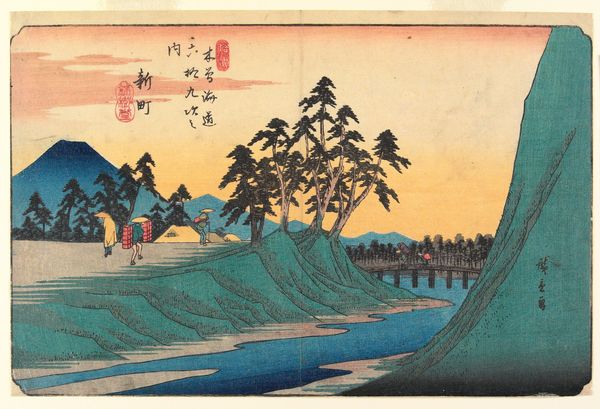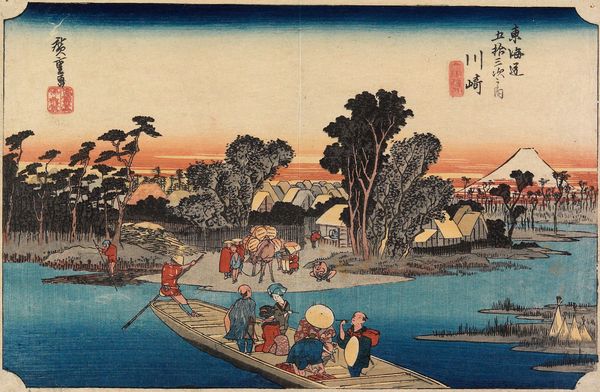
Sasaki Takatsuna and Kajiwara Kagesue Competing to Take the Lead in Crossing the Uji River c. 1835 - 1839
0:00
0:00
print, paper, ink, woodblock-print
#
narrative-art
# print
#
asian-art
#
landscape
#
ukiyo-e
#
paper
#
ink
#
woodblock-print
#
history-painting
Dimensions: 9 5/8 × 14 1/16 in. (24.4 × 35.7 cm) (image, horizontal ōban)
Copyright: Public Domain
Curator: Today we’re looking at “Sasaki Takatsuna and Kajiwara Kagesue Competing to Take the Lead in Crossing the Uji River,” a vibrant woodblock print by Utagawa Hiroshige, dating to around 1835-1839. Editor: It strikes me as almost dreamlike. The figures are sharp, but the colors feel softened, lending a mythic quality to the scene. It is such a serene take on something so inherently unstable—water. Curator: The print depicts an episode from the Genpei War, a crucial moment in Japanese history. The samurai Sasaki Takatsuna and Kajiwara Kagesue famously raced to be the first to cross the Uji River during the Battle of Uji in 1184, demonstrating their courage and loyalty. Note how Hiroshige captures that very drama within the composition. Editor: Absolutely. Looking at the tangible aspect of the artwork, though, I am fascinated by the medium itself—woodblock printing. Imagine the labor involved! The careful carving of the blocks, the layering of inks, the precision required to transfer the image onto the paper. Each print a testament to a collaborative workshop. Curator: You are right to emphasize that communal effort. The choice to depict the samurais hints at established archetypes of power and loyalty. The symbolism around samurai culture is also important—weapons, armor, and the historical narrative all communicate status. This image acts as an ideal of courage to be admired and reproduced over time. Editor: Yes, and even the *type* of paper used—the quality, texture—would impact the reception of the artwork. Was it meant for mass consumption, or for a wealthier clientele? We tend to forget the crucial role material production plays in history! Curator: Food for thought. I find myself returning to the persistent image of the Uji River as both an obstacle to overcome and the very origin point for these brave narratives that have come to shape so much of the cultural landscape. Editor: Thinking about the legacy and historical context is illuminating when regarding this image.
Comments
No comments
Be the first to comment and join the conversation on the ultimate creative platform.
